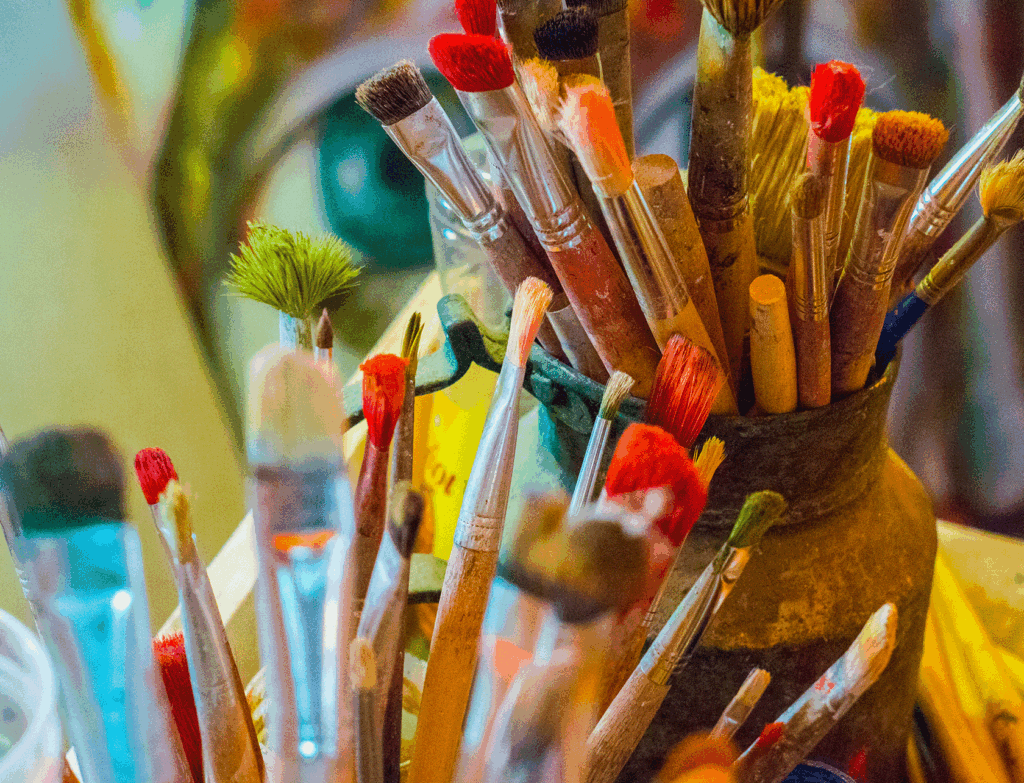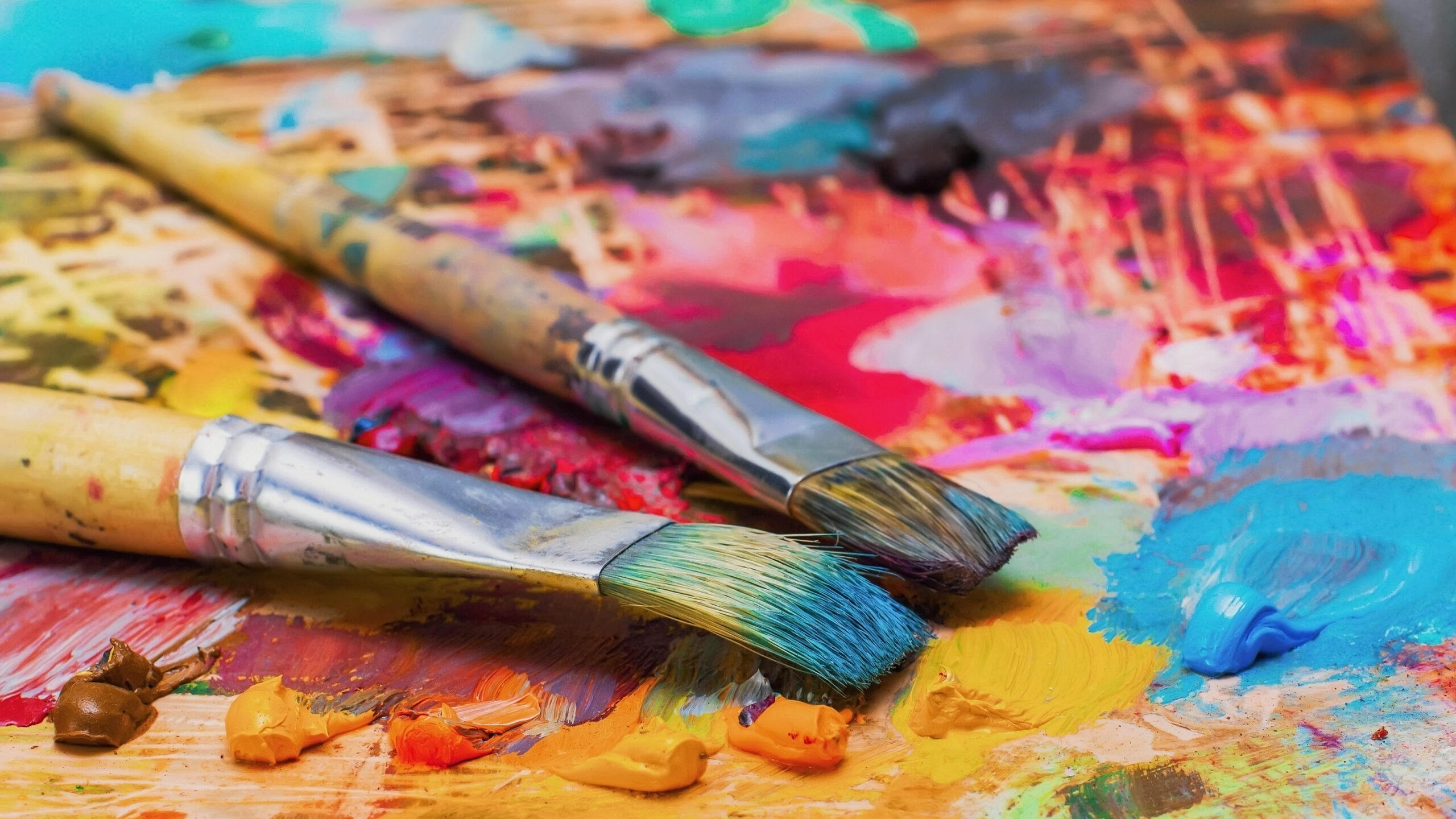ISSUE #026
One of the greatest joys of being an artist is discovering the unique ways God has wired you to see, interpret, and create. Romans 12:6 reminds us that “In His grace, God has given us different gifts for doing certain things well.” That includes the gift of creativity. You don’t have to be like anyone else, and you don’t have to compare your journey with another’s. The way you create, the materials you love, and the stories you tell through your art are all intentional expressions of His design in you.
When you begin to embrace the strengths He’s placed inside of you, your creativity becomes more than just self-expression—it becomes Kingdom expression. My encouragement for you this week is to lean into the beauty of what makes your art distinct. Explore, experiment, and trust that the Holy Spirit is guiding you not only in your spiritual walk but also in your creative journey.
May this week be filled with intentional reflection, creative breakthroughs, and meaningful connection with the Creator who put that beautiful imagination inside you.
In His love and creativity,
Matt Tommey
Click the button to subscribe for free to The Weekly and get an email reminder every Wednesday so you never miss an issue.
Meet Muriel Luedeman…
In our Featured Artist section this week, meet a former Hallmark artist who opened her studio at 72 and discovered a second voice in Holy-Spirit-led abstracts. Her realism makes you linger; her abstracts make you worship. Come see how daily faithfulness turned into JOY and FREEDOM in the studio.
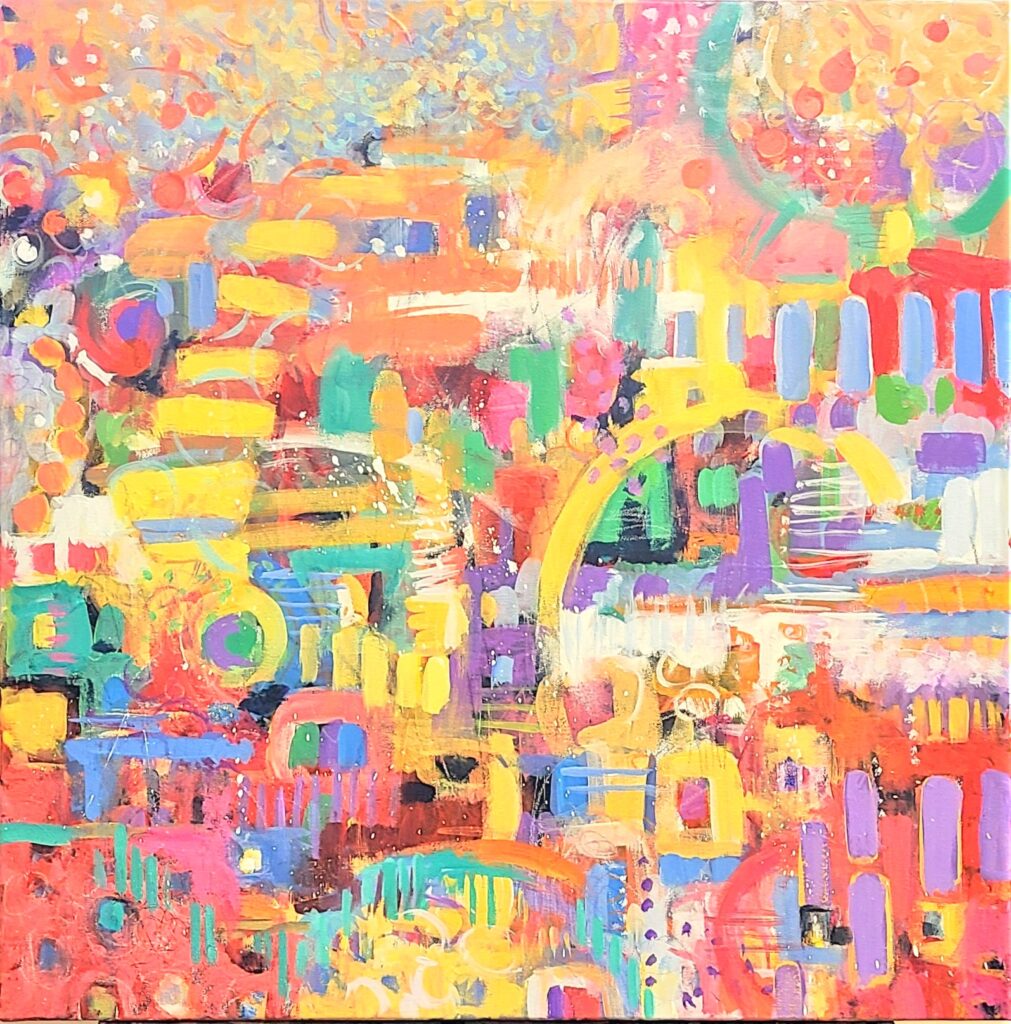
CONNECT
Scripture: “In His grace, God has given us different gifts for doing certain things well.” — Romans 12:6 (NLT)
God has uniquely gifted you as an artist. Your strengths aren’t random—they’re fingerprints of His creative DNA in your life. As you grow in intimacy with Him, He’ll reveal not only what you can do but also why it matters.
Prayer:
Father, thank You for the unique creative strengths You’ve placed in me. Help me stop comparing myself to others and instead walk boldly in the gifts You’ve entrusted to me. Teach me to use my art as a reflection of Your grace and beauty in the world. In Jesus’ name I pray, amen.
Action Step: Write down three artistic strengths you recognize in yourself this week, and thank God for each one.
CLARIFY
Sometimes the hardest part of moving forward is simply recognizing where your strengths lie. When you focus on the gifts God has placed inside you, clarity begins to emerge about where to invest your time and energy. Ask the Lord: “What part of my creativity do You want me to lean into this week?”
Action Step: Take 15 minutes to prayerfully list out your top three creative goals for this season. Circle the one that most aligns with your strengths, and commit to pursuing it intentionally this week.
CREATE
When you know your strengths, you can create with freedom instead of striving. For example, if you excel at color, lean into bold palettes. If your strength is storytelling, craft collections that weave a narrative. Whatever your gift, celebrate it in the studio this week.
Action Step: Set aside one hour this week to create a piece of art that highlights one of your strongest artistic abilities. Don’t overthink it—just create as an act of worship and gratitude.
CULTIVATE
Your artistic strengths are not just for you—they’re a gift to others. When you share your work from a place of confidence in what God has given you, people are drawn to the authenticity and joy that radiates through your art. That’s how connection grows, both spiritually and in business.
Action Step: Share one piece of art on social media this week with a short caption explaining the specific strength God has given you that shines through in that piece. Watch how it resonates with your audience.
Are you loving this Core4 rhythm every week? Get the Core4 Focus Planner and let it help you create a daily rhythm of living and creating with God.
This issue SPONSORED BY
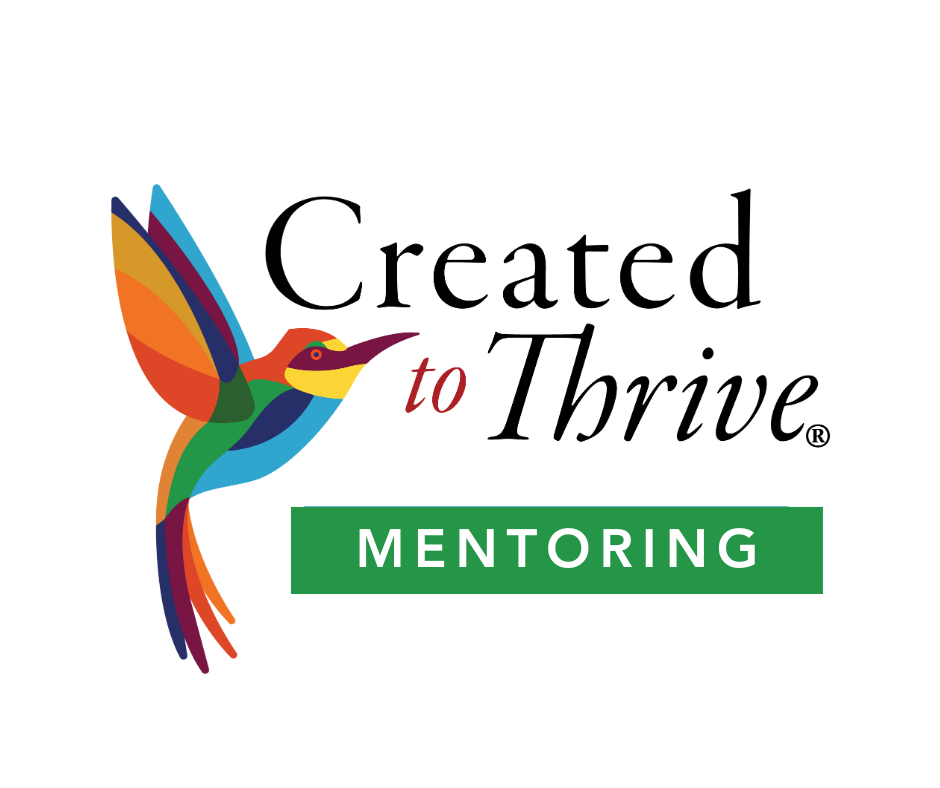
Discover your unique artistic voice and grow in faith, business, and community through the Created to Thrive Artist Mentoring Program—your step-by-step path to thriving as the artist God made you to be.
👉 Learn More Here
WATCH & LISTEN

In this episode of the Thriving Christian Artist Podcast, Matt Tommey unpacks how to:
✅ Recognize the whisper of your creative soul
✅ Decode your unique artistic DNA
✅ Cultivate your God-given gifts over time
✅ Share your art to create a ripple effect of impact
Whether you’re just starting out or have been creating for years, this message will help you uncover your artistic superpower—not in a single moment, but through a faithful, ongoing journey with God.
And in this powerful episode of The Thriving Christian Artist Podcast, I sit down with long-time friends Stephen and Tricia Preston, a creative couple whose lives are a beautiful example of artistry, ministry, and Kingdom impact working hand-in-hand. From running multiple creative ventures to hosting a thriving conference for artists in their church community, the Prestons have spent decades inspiring and equipping others to step boldly into their God-given creativity.
TECH TIP FOR THRIVING
Pinterest isn’t just a place for recipes and DIY projects—it’s a powerful visual platform where creative buyers and collectors are already looking for inspiration. By creating curated boards, you can collect ideas that spark your creativity and showcase your own work in a visual way that builds trust with potential buyers.
Pro Tip: Start a board called “Art Inspiration” and pin 10 images that reflect your style or inspire you. Then, add at least 3 of your own pieces to that board. This helps position you not just as an artist but as a curator of beauty.
👉 Explore Pinterest here: https://pinterest.com
WORSHIP
This week, as we focus on Discovering Your Artistic Strengths (Romans 12:6), Pat Barrett’s powerful worship song Canvas and Clay reminds us that we are God’s masterpiece, shaped by His hands and designed with intention. Just like a potter molds clay or an artist paints on canvas, the Lord has given each of us unique gifts for His glory.
Let this song encourage you to rest in the truth that He never makes mistakes. Every stroke of His brush and every detail of your design carries purpose. As artists and creatives, we can find fresh confidence in knowing our identity and strengths are formed by the Creator Himself.
👉 Listen, worship, and be reminded: You are beautifully and wonderfully made in Christ.
FEATURED ARTIST: Muriel Luedeman
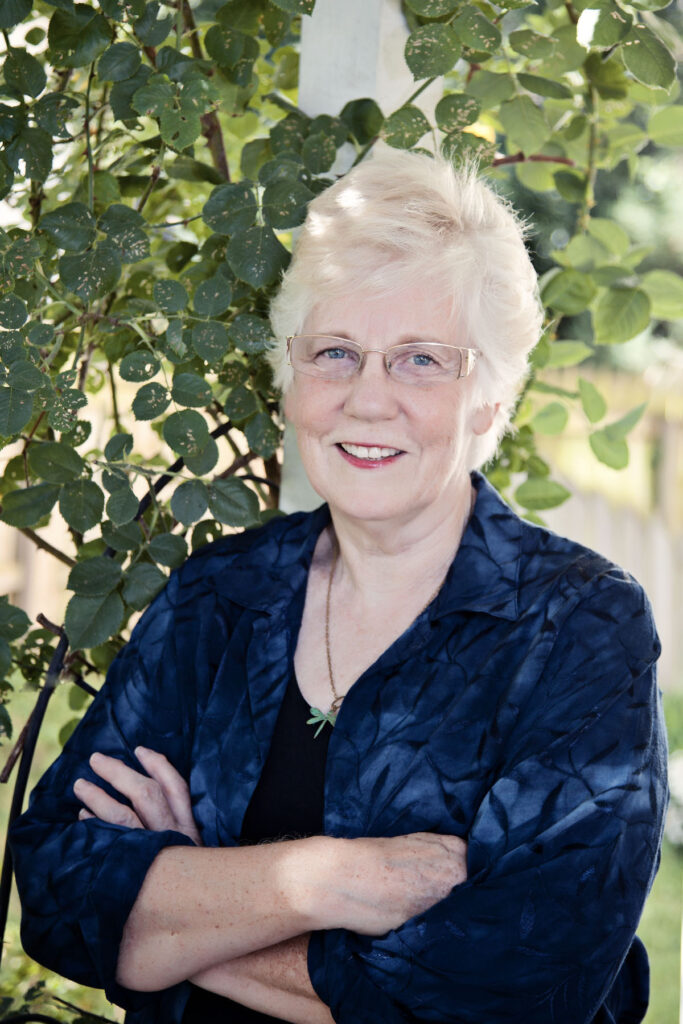
Realism that invites you to linger. Abstracts that invite you to worship.
When Muriel Luedeman opened her studio at age 72, she thought she was simply returning to her roots. After a 31-year career at Hallmark Cards—twenty of those years interpreting other artists’ styles—she expected to keep refining her contemporary realism: snow-washed hometown streets, everyday people, and beloved Kansas City corners that make you stop, breathe, and remember. But the Lord had a surprise—abstracts—and with them, a deeper encounter with His presence in the studio.
“FAITHFUL DIVINE ENCOURAGEMENT describes what I’ve received from Matt and artists in Created to Thrive… It’s been a beautiful journey of growth, healing, finding my purpose and artistic voice, and peace in the Lord.”


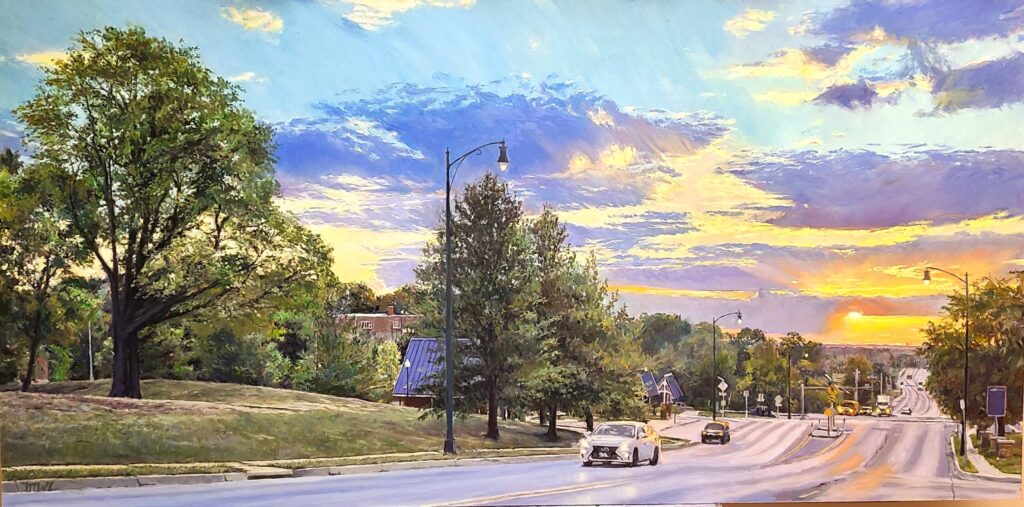
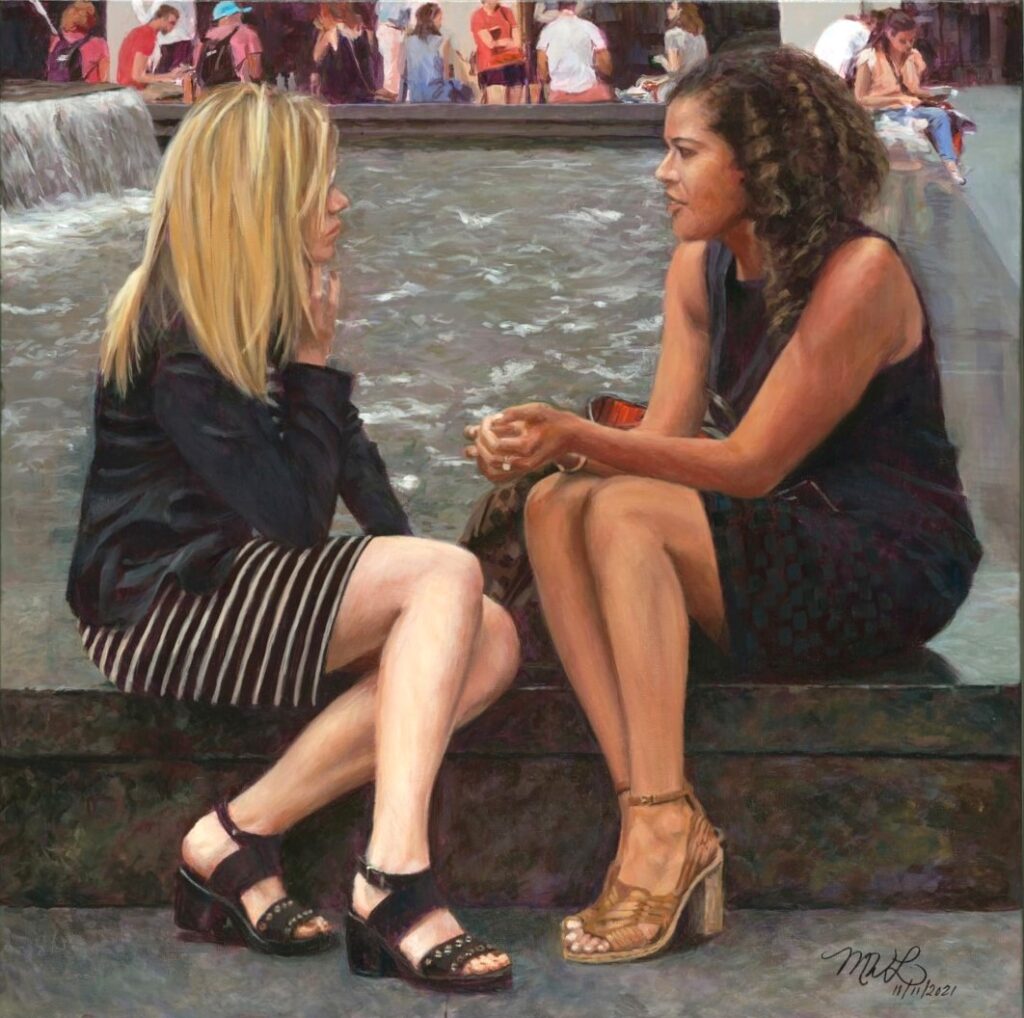
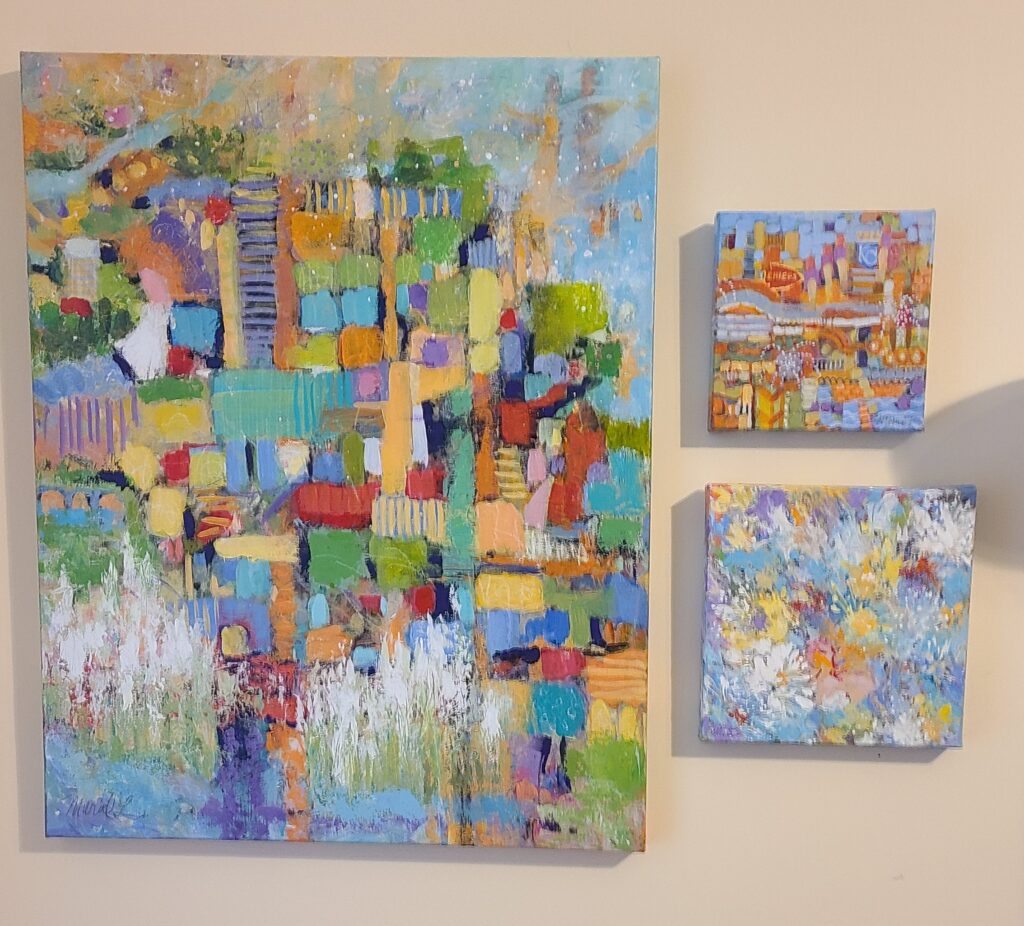
Two voices, one calling
Muriel now creates in two distinct genres—lush, detail-rich realism and free, joy-filled abstracts. The realism pulls viewers closer—like the woman at a local show who wept in front of Muriel’s first snow scene after she committed to daily practice. The abstracts, meanwhile, have become a sacred conversation:
“Abstract painting has done more to connect me with the Holy Spirit than ANYTHING else in my life… With every childlike mark, I learn more about myself and about Him. JOY and FREEDOM.”
Formed by faithfulness (and good counsel)
A divine connection at a kingdom-building conference led Muriel to our community. She took the simplest advice to heart—get to the easel every day—and paired it with deliberate stretch projects in color, composition, and technique. A pivotal moment came listening to Matt’s interview with painter Luke Allsbrook:
“I realized my realism wasn’t passé. It can reconnect people to their roots and God’s creation in subtle, powerful ways.”
She reached out to Luke and found ongoing encouragement for the journey.
Studio rhythms that fuel the work
- Daily making: paint, collage, or mark-making—no judgment, just discovery.
- Spirit-led flow: pray, ask the Holy Spirit to guide, then follow the grace.
- Always sketching: travel sketchbooks for waiting rooms, sidelines, and trips.
- Plein air discipline: don’t rely only on photos—go outside and see.
- Study that shapes: The Artist’s Way (Julia Cameron) and The Adjacent Possible (Nancy Hillis).
Muriel’s encouragement to fellow artists
- Expect God to show up in your practice—He never leaves you.
- Do something every day for your art or business—small steps count.
- Seek the flow, lose track of time, and trust His purpose in the process.
What’s next
Muriel is growing her collector base, sharing regularly with her email list, and applying to juried fine-art shows and placement opportunities around Kansas City—placing both realism and abstracts where they can minister most.
Apply to Be a Featured Artist
Would you like to be considered for one of our artist features? We love sharing the work from our friends around the world who create unique, beautiful and inspired art, regardless of creative medium. And just a reminder, your work does NOT have to be overtly faith-based to be considered. Interested? Just complete this application: https://forms.gle/vmtyk6wg3hSuUAhi9
Resources for Christian Artists
If you’re ready to grow as an artist in your faith, art and even business, then check out these affordable resources for artists just like you.
